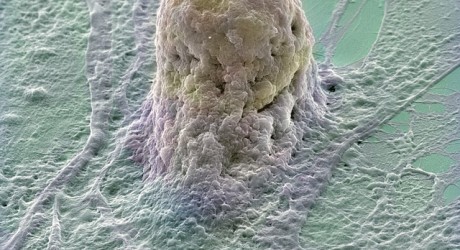Haifa University Researchers Find Important Link In Fight Against Alzheimer’s

In recent years, Alzheimer’s research has primarily focused on battling the disease once symptoms have appeared, even though it’s known that the disease nests in the brain many years before any symptoms are revealed. In advanced stages of the disease, Prof. Rosenblum explains, small lumps (called plaques) are identified forming in the brain from a protein called amyloid. These plaques, he says, are typical in Alzheimer’s patients and undermine brain functioning. Much research has been directed at understanding these plaques and trying to eliminate them or restrict their formation and growth.
The new study, conducted by research student Yifat Segev in the Laboratory for Research of Molecular and Cellular Mechanisms Underlying Learning and Memory, which is headed by Prof. Rosenblum, in cooperation with Prof. Danny Michaelson of Tel Aviv University, sought to identify factors that could be linked to Alzheimer’s even before the irreversible amyloid plaques are formed, and that are connected to the disease’s primary risk factor – age.
Promising results
A previous study co-authored by Canadian researchers and Prof. Rosenblum’s lab at the University of Haifa, revealed that cognitive abilities could be improved by altering the activity of the eIF2alpha protein, which regulates the creation of proteins in all cells, including nerve cells. That research gave Alzheimer’s researchers a glimmer of hope: Perhaps it would be possible to improve cognitive abilities or even prevent cognitive damage in Alzheimer’s patients at an early stage of the disease by intervening in the mechanisms that regulate protein generation in nerve cells.
The current study compared mice that expressed the human Apoe4 gene – a gene known as a central risk factor for Alzheimer’s – with a group of mice with the parallel Apoe3 gene, which does not constitute a risk factor for the disease. Mice in the former group showed a change in the regulating mechanism for protein generation involving the eIF2alpha protein that damaged the cognitive abilities of those mice at a young age. This sort of mechanism change is characteristic of aging, and so also hinted at the tendency of these mice toward premature aging.
According to Segev, this is the first time that a link has been found between the activity of eIF2alpha and the Apoe4 gene in relation to Alzheimer’s disease. She noted that modification treatments for the eIF2alpha mechanism are being widely researched and are developing quickly, and so the more we can understand about the connection between this mechanism and Alzheimer’s, the more we can find ways to identify and slow the progress of the disease.
